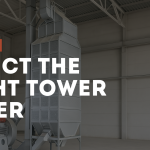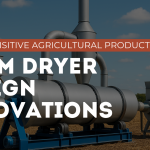Introduction
Coffee, one of the world’s most beloved beverages, undergoes a remarkable transformation from green seed to aromatic bean through the crucial process of roasting. Throughout history, the equipment used for this transformation has evolved dramatically, reflecting broader technological revolutions and human ingenuity. This evolution has not only changed how coffee is produced but has fundamentally altered the quality, consistency, and character of the coffee we consume.
From humble beginnings over open fires to today’s computer-controlled smart roasters, the journey of coffee roasting equipment mirrors our own technological advancement. This article traces that fascinating evolution and explores how each innovation has shaped the industry we know today.
Ancient Beginnings: The Dawn of Coffee Roasting
The story of coffee roasting begins in the highlands of Ethiopia, where coffee was first discovered around the 9th century. Early methods of roasting were remarkably simple:
- Open fire roasting: The earliest method involved roasting coffee beans in thin, perforated pans held over open flames
- Stone roasting: Another ancient technique used heated stones to roast the beans
- Clay pot roasting: In the Middle East, specialized clay vessels became common tools for roasting
These rudimentary methods required incredible skill and attention. Roasters would judge the process entirely by sight, sound, and smell—watching the color change, listening for the “crack” sounds that indicate roasting stages, and smelling the developing aromas.
As coffee spread to Europe in the 16th and 17th centuries, simple metal cylindrical containers with hand-cranked mechanisms emerged, allowing for more even roasting. These early devices, while primitive by today’s standards, represented the first specialized tools designed specifically for coffee roasting.
Pre-Industrial Innovation: The Foundation of Commercial Roasting
By the late 18th century, coffee had become enormously popular throughout Europe and the Americas, creating demand for more efficient roasting methods. This era saw the development of:
- Cylinder roasters: Metal cylinders that rotated over heat sources, allowing for larger batch sizes
- Home roasting equipment: Small, specialized devices for domestic use, reflecting coffee’s growing importance in daily life
- Early manufacturing: The first commercially produced roasters began to appear, though still largely hand-operated
In 1864, Jabez Burns of New York patented the first commercially successful coffee roaster that didn’t need to be moved away from the heat source to discharge the roasted beans. This innovation dramatically improved efficiency and is considered one of the most important early developments in commercial roasting technology.
The Industrial Revolution: Mechanization Transforms Coffee Roasting
The industrial revolution brought unprecedented change to coffee roasting, as steam power and later electricity revolutionized production capabilities:
Mass Production Begins
- Steam-powered roasters: The application of steam engines to drive roasting equipment allowed for significantly larger production volumes
- Cast iron construction: More durable materials enabled equipment to withstand continuous use in commercial settings
- Factory production: Coffee roasting moved from small shops to factories, with specialized large-scale equipment
Key Innovations of the Industrial Era
The late 19th and early 20th centuries saw several critical developments:
- Temperature monitoring: The introduction of thermometers to roasting machines around the 1870s
- Cooling systems: Mechanical cooling systems that rapidly stopped the roasting process at the desired point
- Chaff collection: Systems to remove the papery chaff released during roasting
- Gas burners: The transition from solid fuels to gas for more consistent heat
Notable manufacturers like Probat (founded in 1868) and Typhoon (1923) emerged during this period, establishing standards for commercial roasting equipment that would influence the industry for generations.
Post-World War II: Automation and Control Revolution
The post-war period brought new technologies and approaches to coffee roasting, with a focus on automation, consistency, and control:
The Birth of Semi-Automation
- Electric motors: Replaced manual operation for most commercial equipment
- Automated temperature controls: Thermostat systems that could maintain more precise temperatures
- Timers: Introduced more consistent roasting durations
- Enhanced ventilation systems: Better smoke control and environmental considerations
Landmark Equipment
This era saw the emergence of iconic machines that would define commercial roasting:
- Probat G Series: Introduced in the 1950s, these became industry standards for drum roasting
- Gothot roasters: Pioneer in indirect heating systems that reduced risk of scorching
- Burns batch roasters: Advanced American designs with improved control systems
These machines introduced greater consistency to the roasting process, allowing for more reliable quality control and the development of consistent brand profiles that consumers could recognize and trust.
The Fluidized Bed Revolution
One of the most significant technological departures came in 1975 when Michael Sivetz patented the fluidized bed roaster (also called air roasters). This technology:
- Used hot air forced through a screen or perforated plate to lift and roast the beans
- Eliminated the need for mechanical agitation with drums
- Provided extremely even heat distribution
- Resulted in cleaner flavor profiles due to immediate chaff removal
- Offered faster roasting times and different flavor development
The Sivetz roaster and similar designs represented a fundamentally different approach to heat transfer in coffee roasting, creating an entirely new category of equipment that would develop alongside traditional drum roasters.
The Digital Revolution: Computerization of Coffee Roasting
The late 1980s and 1990s saw computing transform coffee roasting with unprecedented precision and repeatability:
Digital Control Systems
- Computer interfaces: Replacing analog controls with digital systems
- Profile roasting: The ability to program and execute precise time-temperature profiles
- Data logging: Recording temperature changes throughout the roast for analysis
- PID controllers: Proportional-Integral-Derivative controls allowing for more sophisticated temperature management
The Rise of Profile Roasting
This period marked the transition from largely sensory-based roasting decisions to scientifically controlled approaches:
- Programmable profiles: Allowing roasters to save and precisely repeat successful roasts
- Multiple temperature sensors: Monitoring bean temperature, air temperature, and environmental factors
- Graphical interfaces: Visual representations of the roasting curve and development
- Recipe management: Digital storage of different profiles for different coffee varieties
Manufacturers like Diedrich, Loring, and modern Probat models integrated these digital technologies, forever changing the relationship between roaster and machine. The roaster’s role evolved from manual operator to profile creator and quality supervisor.
The Smart Roaster Era: IoT, AI, and Data Analytics
Today’s most advanced roasting equipment represents a quantum leap forward, incorporating technologies that would have seemed like science fiction to early coffee roasters:
Internet of Things (IoT) Integration
- Remote monitoring: Ability to track roasting processes from anywhere
- Cloud connectivity: Storing profiles and production data in secure cloud environments
- Automatic updates: Software improvements delivered remotely
- Mobile applications: Controlling and monitoring roasters via smartphones and tablets
Artificial Intelligence and Machine Learning
- Pattern recognition: AI systems that can identify optimal roasting patterns
- Predictive analytics: Anticipating maintenance needs and potential failures
- Roast defect detection: Algorithms that identify problems during the roasting process
- Self-optimization: Systems that can suggest profile improvements based on past results
Advanced Sensor Technology
- Near-infrared spectroscopy: Real-time chemical analysis during roasting
- Color tracking systems: Precise monitoring of bean color development
- Acoustic monitoring: Advanced systems that listen for first and second crack
- Environmental monitoring: Tracking ambient conditions that might affect roasting
Leading examples include the Probat P Series with Industry 4.0 integration, the Loring Smart Roast system with its integrated control platform, and the Ikawa Pro 100, which offers complete digital control through a mobile application.
Sustainability Innovations in Modern Roasting Equipment
Environmental concerns have driven significant innovation in modern roaster design:
Energy Efficiency
- Heat recirculation systems: Capturing and reusing heat from the roasting process
- Improved insulation: Reducing heat loss and energy consumption
- Regenerative burners: More efficient gas consumption with lower emissions
- Electric roasting: Development of fully electric roasters with renewable energy compatibility
Emissions Control
- Afterburners: Systems that reduce particulate and volatile organic compound emissions
- Catalytic oxidizers: Converting pollutants to carbon dioxide and water
- Smoke scrubbers: Advanced filtration systems for urban environments
- Low-NOx burners: Reducing nitrogen oxide emissions from gas-fired roasters
Case Study: The Loring Smart Roast
The Loring Smart Roast system represents one of the most significant sustainability innovations, with its single-burner design that:
- Uses up to 80% less energy than conventional roasters
- Reduces greenhouse gas emissions by similar amounts
- Eliminates the need for a separate afterburner
- Maintains precise control and excellent cup quality
These sustainability features no longer come at the expense of quality or control—modern equipment often delivers superior results while consuming fewer resources.
Scale-Specific Evolution: From Artisanal to Industrial
The technological evolution of coffee roasting equipment has affected different scales of production in distinct ways:
Artisanal and Micro-Roasters
- Sample roasters: Sophisticated small-batch equipment for test roasting, like the Ikawa Pro
- 1-5kg roasters: High-precision small roasters with digital controls, such as the Probatino
- Modular systems: Flexible equipment that can grow with the business
- Multi-profile capabilities: Allowing small producers to create diverse product offerings
Medium-Scale Production
- 15-30kg batch roasters: Sweet spot for specialty coffee operations
- Semi-automated systems: Balancing control with consistency
- Profile libraries: Managing dozens or hundreds of different coffees efficiently
- Connectivity: Integration with packaging and inventory systems
Industrial-Scale Production
- Large drum roasters: 120kg+ batch sizes for high-volume production
- Continuous roasting systems: Non-stop production for commercial grades
- Full automation: Minimal operator intervention for maximum consistency
- Enterprise integration: Full connection with ERP and production management systems
Each scale has seen the application of new technologies in ways that address their specific needs, from the craft-focused precision of small roasters to the efficiency and consistency demands of industrial production.
Landmark Equipment Models That Changed the Industry
Certain machines stand out as game-changers that profoundly influenced coffee roasting:
Probat Burns UG15/22/30 Series (1950s-1970s)
- Set the standard for mid-sized production roasting
- Established the classic drum roaster design
- Known for durability with many still in operation decades later
Sivetz Fluid Bed Roaster (1975)
- Pioneer of air roasting technology
- Created cleaner flavor profiles and faster roasting times
- Challenged the dominance of drum roasters
Diedrich IR-Series (1980s)
- Innovative infrared burners for more even roasting
- Early adoption of computer control systems
- Became a favorite of the emerging specialty coffee movement
Loring Smart Roast (2000s)
- Revolutionary single-burner design
- Set new standards for energy efficiency
- Exceptional control and consistency
Ikawa Digital (2010s)
- Fully digital sample roaster
- Mobile app control with cloud profile sharing
- Democratized sample roasting for green coffee buyers
These landmark machines didn’t just improve on existing designs—they fundamentally rethought the roasting process and created new possibilities for coffee quality and production.
Impact on Coffee Quality, Consistency, and Efficiency
The technological evolution of roasting equipment has transformed coffee itself in several key ways:
Quality Improvements
- Precision heat control: Allowing for the development of complex flavor compounds
- Bean monitoring: Preventing defects and optimizing development time
- Profile specificity: Tailoring roast profiles to specific bean characteristics
- Sensory feedback integration: Connecting cupping results with precise roasting data
Consistency Advances
- Batch repeatability: Achieving the same results day after day, year after year
- Environmental compensation: Adjusting for changes in ambient conditions
- Operator independence: Reducing variation between different roaster operators
- Green coffee variability management: Accounting for seasonal changes in coffee beans
Efficiency Gains
- Reduced labor costs: Less manual intervention required
- Higher throughput: Faster roasting times without quality compromise
- Energy savings: Lower utility costs per kilogram of coffee
- Reduced waste: Fewer rejected batches due to roasting errors
These improvements have enabled the specialty coffee industry to flourish while also allowing commercial coffee producers to maintain consistent quality at scale—something that would have been impossible with earlier technologies.
Future Trends in Coffee Roasting Technology
The evolution of coffee roasting equipment continues, with several emerging trends pointing the way forward:
Machine Learning and AI
- Development of systems that can predict optimal roast profiles based on green coffee characteristics
- Real-time adjustment capabilities that respond to variations during the roast
- Quality prediction models that evaluate potential quality before roasting
Sustainability 2.0
- Zero-emission roaster designs
- Carbon-negative approaches that actually remove carbon from the atmosphere
- Complete circularity in equipment manufacturing
- Alternative energy sources like concentrated solar roasting
Biotechnology Integration
- Chemical sensors that detect specific flavor precursors
- Systems that can target particular enzymatic reactions during roasting
- Custom roasting approaches based on bean cellular structure
Democratization of Technology
- More affordable advanced technology for smaller roasters
- Open-source roasting software communities
- Shared data platforms for collaborative improvement
- Educational interfaces that develop roaster skills
These emerging technologies promise to further transform coffee roasting, making it more precise, sustainable, and accessible than ever before.
Conclusion: Navigating the Complex Equipment Landscape
The evolution of coffee roasting equipment from simple pans over open fires to AI-enhanced precision instruments represents one of the most remarkable technological journeys in food production. Each advancement has expanded possibilities for coffee quality, consistency, and efficiency, while simultaneously increasing the complexity of equipment selection and operation.
For coffee producers, roasters, and entrepreneurs, this complex landscape presents both challenges and opportunities. The right equipment can transform a coffee business, opening new markets and improving profitability through better quality and efficiency. However, the wrong choices can lead to wasted investment, quality limitations, and competitive disadvantages.
This is where specialized consulting becomes invaluable. With expert guidance on equipment selection, installation, operation, and maintenance, businesses can navigate the technological landscape with confidence, selecting and implementing solutions that align with their specific goals, scale, and coffee philosophy.
Whether you’re establishing a new roasting operation, upgrading existing equipment, or optimizing your current setup, partnering with experienced consultants can make the difference between merely keeping up with technology and harnessing it to create a genuine competitive advantage.
As coffee roasting technology continues its remarkable evolution, one thing remains certain: behind every great cup of coffee stands the perfect marriage of quality beans, skilled operators, and the right roasting technology for the job.




